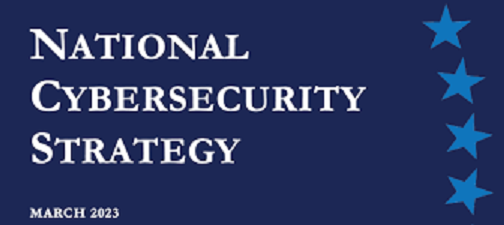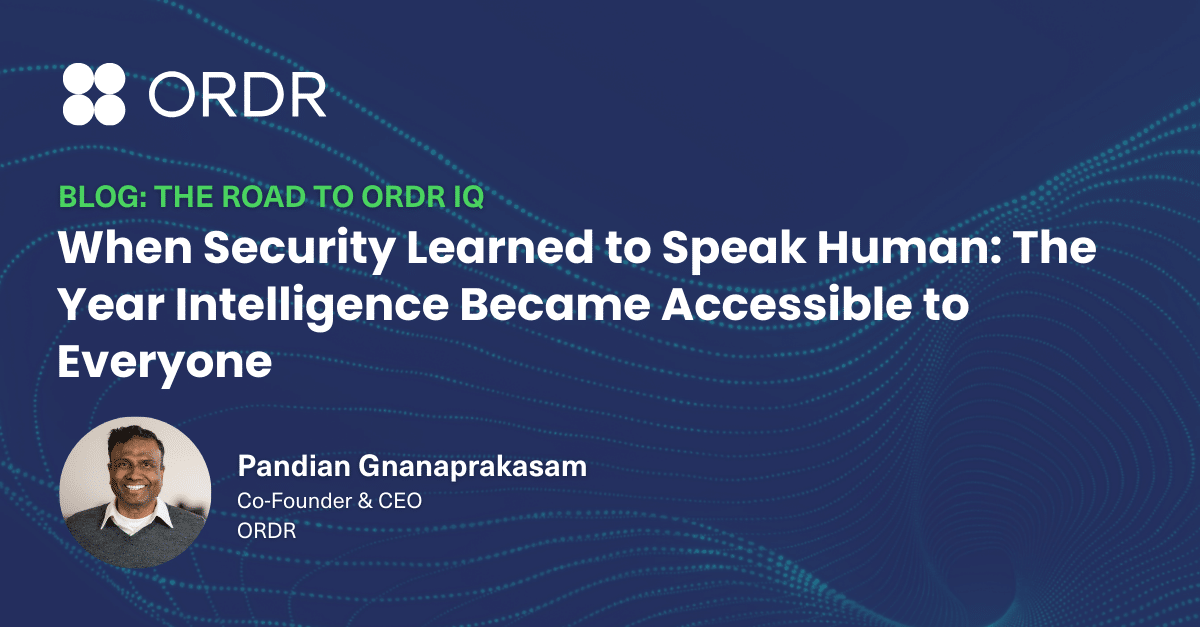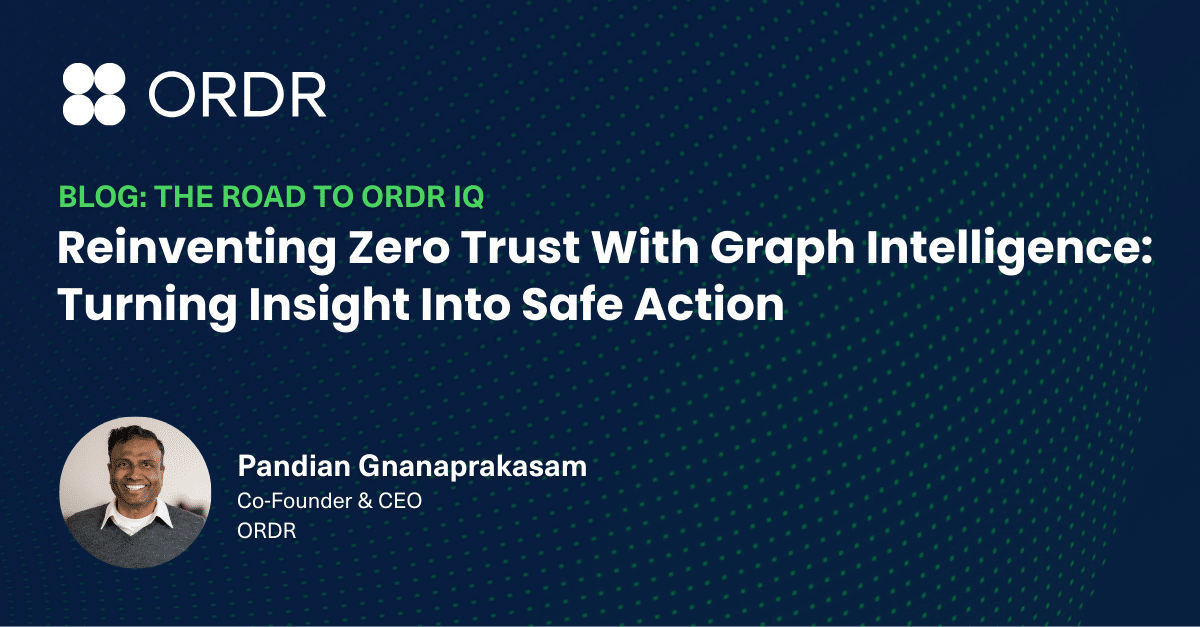When the Biden-Harris Administration issued its National Cybersecurity Strategy on March 2, I was thrilled to see the high profile focus on this topic. Social media was quickly buzzing as bloggers, influencers, and just about everyone with an opinion to share were in a rush to be first out of the gate with their hot takes. There was a lot of energy surrounding the announcement, and that’s a good thing. The cybersecurity community benefits from the attention when the White House lays out a vision for cyberdefense that highlights many of the issues that have plagued industry for years.
From within the team here at Ordr there is consensus that one of the biggest takeaways from the document is the “we’re in this together” message that pervaded the memo accompanying the strategy. Although that has been true for nearly fifty years—since the advent of the first computer virus in the early 1970s–cooperation among private enterprises and government has not been the way the industry has operated.
That has to change if we are to make meaningful progress toward a stouter national cybersecurity posture. As the president said, “to be able to trust that the underlying digital ecosystem is safe, reliable, and secure” requires “robust collaboration, particularly between the public and private sectors.” That means going beyond merely trying to protect individual enterprises, but striving for greater cooperation in areas like sharing threat intelligence, greater interoperability of tools and platforms, and building technology products with a security-first philosophy.
A Cohesive Vision
After reading through the National Cybersecurity Strategy, it struck me that at its core the strategy is about accountability. The emphasis of its content was on consolidating a number of policies that have been announced previously, and expressing them in a single, cohesive document that lets everyone affected by these policies know what is expected of them. Accountability and simplicity are important for public and private organizations that need to draft their own cybersecurity strategies; and it is important for technology innovators and service providers who must develop the tools we will rely on to meet the goals of this ambitious strategy, namely increased security and resilience for, and trust in, the infrastructure of our digital economy.
Complementing the National Cybersecurity Strategy, the White House also released a Fact Sheet to summarize and reiterate the Strategy’s goals, describing five pillars on which the plan will be built, including:
- Defend Critical Infrastructure
- Disrupt and Dismantle Threat Actors
- Shape Market Forces to Drive Security and Resilience
- Invest in a Resilient Future
- Forge International Partnerships to Pursue Shared Goals
To achieve these ambitious goals demands an acknowledgment that business-as-usual cannot continue, and that cybersecurity must be elevated as a priority for all organizations from small companies to large enterprises. This requires making greater investments in effective security programs and calls for a seat at the table for CIOs and CISOs to advocate for such programs at the board level. Some key points from the Fact Sheet that stand out as vital to doing this are:
- “[Expand] the use of minimum cybersecurity requirements in critical sectors.”
- “[Enable] public-private collaboration at the speed and scale necessary to defend critical infrastructure and essential services.”
- “[Address] the ransomware threat through a comprehensive Federal approach and in lockstep with our international partners.”
- “Place responsibility on those within our digital ecosystem that are best positioned to reduce risk.”
- “[Reduce] systemic technical vulnerabilities in the foundation of the Internet and across the digital ecosystem.”
- “[Prioritize] cybersecurity R&D for next-generation technologies;” and,
- “[Develop] a diverse and robust national cyber workforce.”
A Plan for Today and Tomorrow
The Cybersecurity memo demonstrates a vision that takes into account both current needs and reliance on connected devices comprising the Internet of Things (IoT)–an issue near and dear to our hearts here at Ordr. In Strategic Objective 3.2: Drive the Development of Secure IoT Devices, the National Cybersecurity Strategy accurately observes that “many of the IoT devices deployed today are not sufficiently protected against cybersecurity threats. Too often they have been deployed with inadequate default settings, can be difficult or impossible to patch or upgrade, or come equipped with advanced—and sometimes unnecessary—capabilities that enable malicious cyber activities on critical physical and digital systems.”
No Time to Waste
Establishing regulations that address the weaknesses of IoT devices are necessary, but they will take years to draft, enact, and enforce. In the meantime, there are tens of billions of connected devices in operation today, many of which fit the description defined by the White House. These risks need to be addressed today whether or not there is a law compelling compliance.
We must ensure the Internet remains open, free, global, interoperable, reliable, and secure—anchored in universal values that respect human rights and fundamental freedoms.”
Fortunately, the methodologies and applications to close the IoT security gap are available now, and embodied in the Ordr platform and our See, Know, Secure approach to connected device security. Ordr’s platform has been built to discover every connected device operating in a network while profiling and monitoring each device for known risks and risky behavior. Then, taking that information and automating the segmentation and policy enforcement necessary to prevent threats targeting IoT and stop active threats from moving laterally within an environment. This philosophy is one the federal government already acknowledges as effective, and was mandated for all executive branch agencies by the Cybersecurity and Infrastructure Security Agency (CISA) in its recent Binding Operational Directive 23-01 (BOD 23-01), issued last October and going into effect next month.
As we have with previous policy announcements such as Strengthening America’s Cybersecurity, the IoT Cybersecurity Improvement Act, the PATCH Act, and Zero-Trust initiatives, Ordr supports–in word and action–the White House’s efforts to advance the protection of cybersecurity. We agree wholeheartedly with President Biden when he said, “We must ensure the Internet remains open, free, global, interoperable, reliable, and secure—anchored in universal values that respect human rights and fundamental freedoms. Digital connectivity should be a tool that uplifts and empowers people everywhere, not one used for repression and coercion.”

Interested in
Learning More?
Subscribe today to stay informed and get
regular updates from ORDR Cloud




